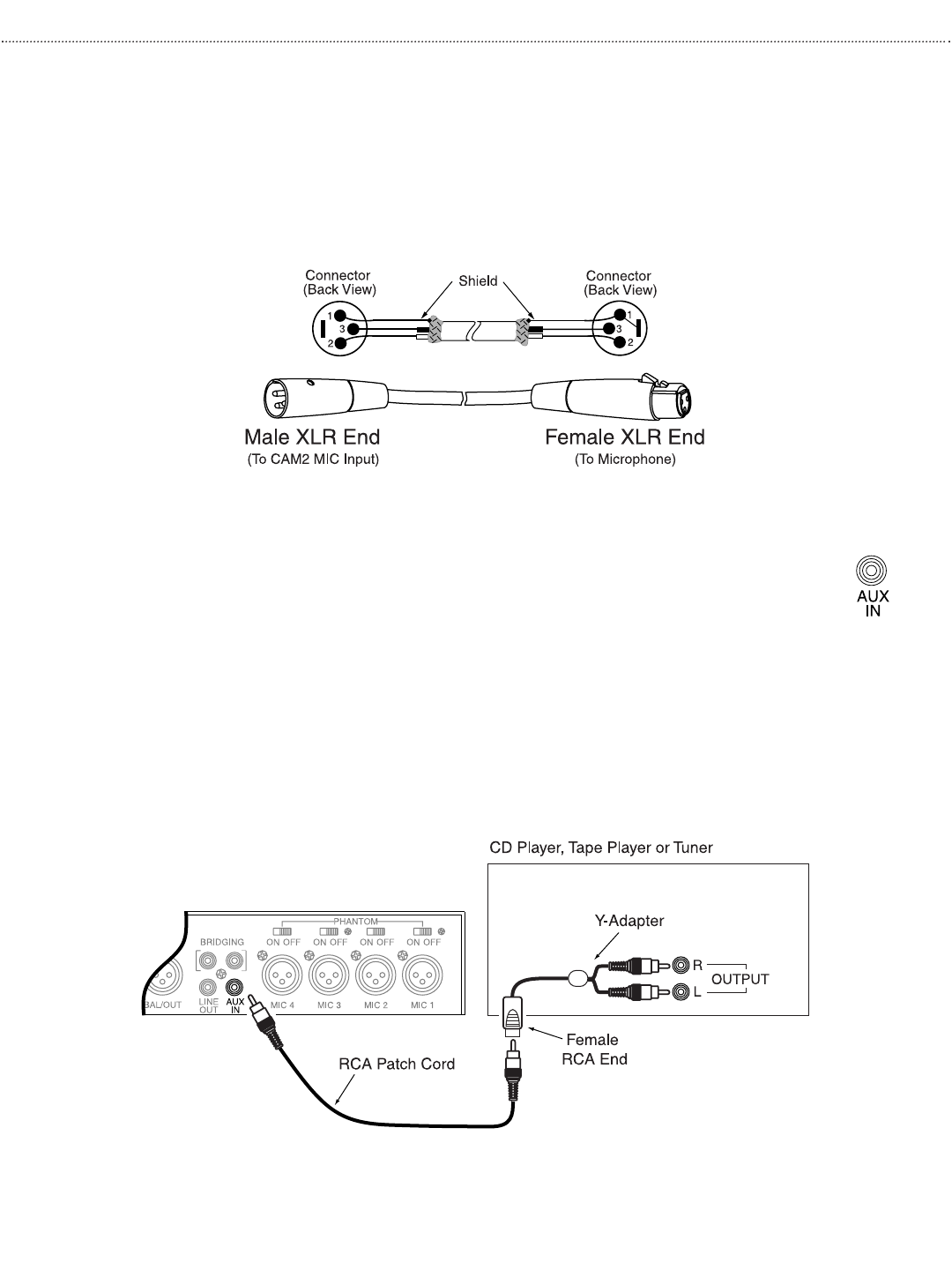
Output Connections
BAL/OUT to Balanced Input of Other Equipment
The CAM2 provides a balanced output signal from the male XLR connector labeled
BAL/OUT. Many types of professional equipment, like power amplifiers, have balanced
inputs that are compatible with this output.The figure below shows the connection to a
balanced input that has screw terminals. Many balanced inputs use XLR connectors. For
XLR inputs, a standard MIC cable can be used.The figure in the next section shows this
type of cable.The balanced output provides the same type of protection from noise and
interference that the balanced microphones have and requires 3 wires to make the con-
nections. For the best results, use this output connector if running the CAM2 output
over long distances. When using the BAL/OUT to feed amplification or recording equip-
ment, set the OUTPUT LEVEL switch to the +4dB position.This position provides the
larger output voltages (relative to the smaller microphone output signals) required by
other equipment.
BAL/OUT to Microphone Input of Other Equipment
It is sometimes necessary to feed the CAM2 output to the microphone input of anoth-
er piece of equipment. However,the signal level of the CAM2’s output must be at a volt-
age level compatible with microphone inputs. Microphone inputs require much smaller
signal voltages than the inputs of other equipment.To accommodate this requirement,the
CAM2 OUTPUT LEVEL switch can be set to the -50dB position. In this position,the out-
put level of the CAM2 will be reduced to one that is compatible with microphone inputs.
The CAM2 BAL/OUT connector requires a female XLR connector and the microphone
inputs of other equipment typically require a male XLR.Therefore, a female to male XLR
cable must be used for this type of connection.The diagram below shows the wiring of
this type of cable and also the correct OUTPUT LEVEL switch position for feeding micro-
phone inputs.
Input Connections
Microphone Cable Wiring
The CAM2 has female XLR connectors as its microphone inputs, these connectors have 3 pins and are designed to
be connected to balanced, low-impedance microphones.These microphones require 3 connections and use a cable
that has two insulated conductors and a shielding material that encases the conductors (the shield provides the third
connection). The use of balanced microphones provides superior protection against the pickup of unwanted hum,
noise, and interference. It allows long cables to be used to connect the microphones to the CAM2.
The figure below shows how to wire the Male and Female XLR connectors onto a 2-conductor with shield cable
to make custom microphone cables.
AUX IN
Certain music input sources, such as tape decks and CD players, send larger signal levels that
microphone inputs are not suited to accept. Microphone inputs are very sensitive and if one
of these devices were connected to a microphone input, then the output from the CAM2
would be distorted and unusable.
Since it is common to have recorded music mixed together with live sound from microphones, the CAM2 provides
a single AUX input for the connection of a tape deck, CD player, tuner or similar equipment.The AUX IN connec-
tion has the appropriate input sensitivity to accept signals from these types of equipment.The input uses an unbal-
anced RCA connector which is typical of the output from playback equipment. RCA patch cords are readily avail-
able for making connections to this input. However, this is a mono input so the output from a stereo source must
be combined by a Y-adapter so that both halves of the stereo playback are heard.The AUX input is an unbalanced
input.When using unbalanced inputs, it is a good idea to keep the length of the connecting cable to 10 feet or less.
6 7

















